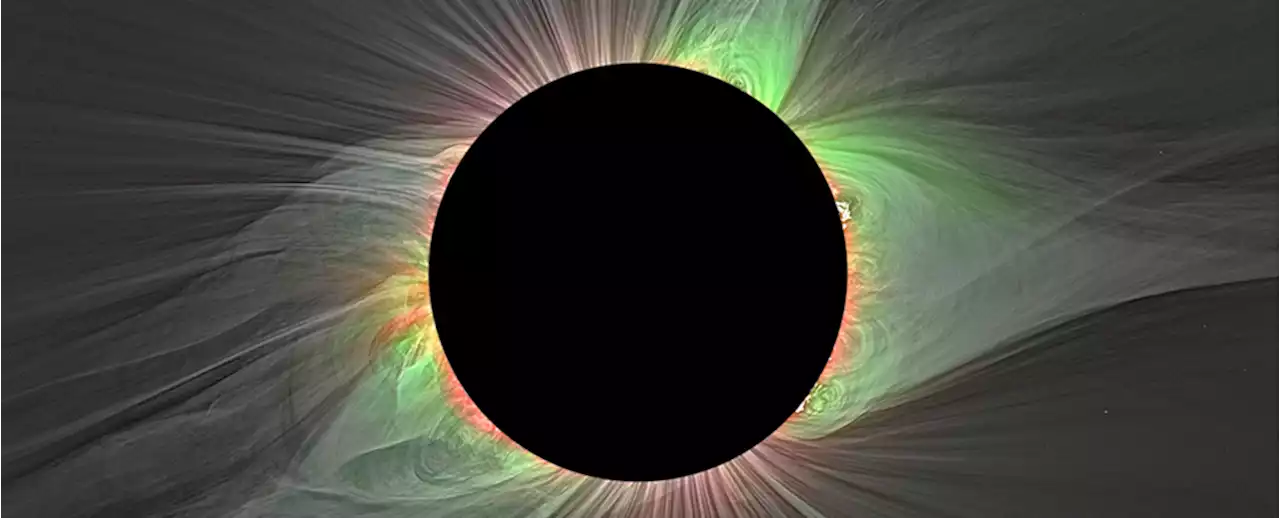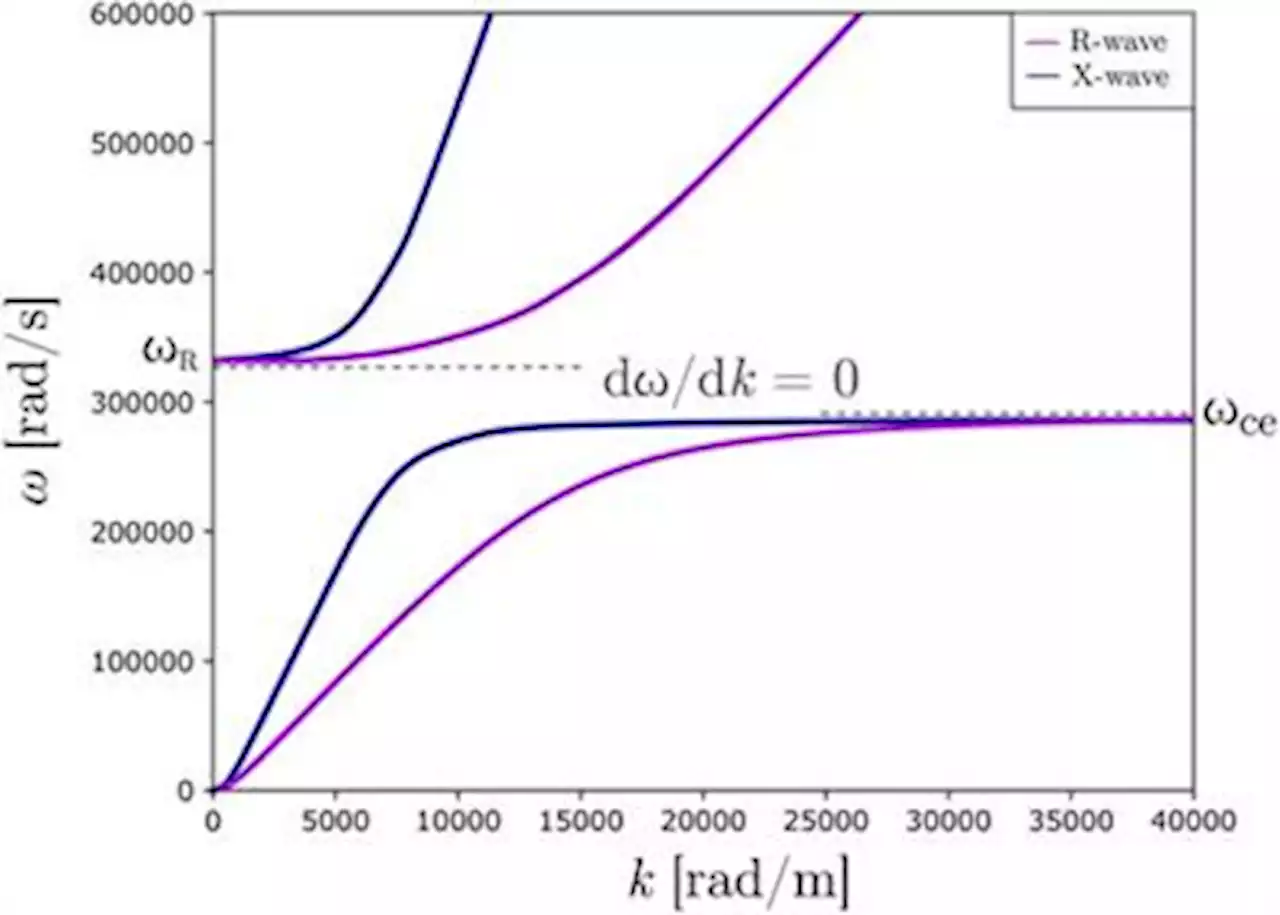Their primary source of inspiration? The albatross.
The team of scientists, led by Mathias N. Larrouturou, a spaceflight researcher at McGill University, acknowledged thatto faster space travel, such as solar sails, are currently under study. Ideas of magnetic, electric, and plasma magnet sails have also been proposed. In the current study, however, researchers look at employing dynamic soaring sails to power a space vehicle.
"Drawing inspiration from maneuvers practiced by seabirds and RC glider pilots, we show that a flight vehicle interacting with two different regions of wind can extract energy from the wind shear and accelerate to speeds greater than the wind," the teamThe scientists look into dynamic soaring - flying lifting trajectories that "bounce back and forth between the different regions of wind speed, like a tennis ball bouncing back and forth between two approaching trains.
This wing could be produced by using a plasma wave antenna made of two plasma magnets. The field created by the magnets could interact with the solar wind flows in different directions, thereby creating lift."A physical wing would be impractically heavy, so instead, we expand upon Jeff Greason's idea of extracting power from the flow of plasma blowing over the vehicle. In this new paper, we push the idea one step further and eliminate using propellant entirely.
"Development of the concept of interacting with the solar wind as a means of propulsion will require experimental validation in stages, the first of which would be a demonstration of significant drag against the"The plasma magnet appears to be the highest performing in terms of accelerations of the drag concepts reviewed in the Introduction, so a plasma magnet technology demonstration would appear to be the next logical step.
that could transit the orbit of Jupiter just six months after launch from Earth and another application of the wind-riding plasma magnet technology calledThese groundbreaking missions would provide validation that meaningful propulsive power could be extracted from the solar wind, providing a foundation for the more advanced concept of extracting electrical power from the wind for lift generation," the scientists added.
United States Latest News, United States Headlines
Similar News:You can also read news stories similar to this one that we have collected from other news sources.
 University of Arizona researchers awarded $7.3M to study long COVIDThe study will follow at least 1,000 individuals over two years to track the progression of post-COVID-19 conditions over time.
University of Arizona researchers awarded $7.3M to study long COVIDThe study will follow at least 1,000 individuals over two years to track the progression of post-COVID-19 conditions over time.
Read more »
 'Dynamic Soaring' Trick Could Speed Spacecraft Across Interstellar SpaceSailing to the stars on the scale of human lifetimes could be a matter of choosing the right kind of wind.
'Dynamic Soaring' Trick Could Speed Spacecraft Across Interstellar SpaceSailing to the stars on the scale of human lifetimes could be a matter of choosing the right kind of wind.
Read more »
 Dynamic spatiotemporal determinants modulate GPCR:G protein coupling selectivity and promiscuity - Nature CommunicationsG protein coupled receptors (GPCRs) can couple to different Gα protein subfamilies either selectively or promiscuously. Here, the authors use computational approach to show that selectivity determinants are at the periphery of the GPCR—G protein interface and that promiscuous GPCRs more frequently sample the common rather than selective contacts.
Dynamic spatiotemporal determinants modulate GPCR:G protein coupling selectivity and promiscuity - Nature CommunicationsG protein coupled receptors (GPCRs) can couple to different Gα protein subfamilies either selectively or promiscuously. Here, the authors use computational approach to show that selectivity determinants are at the periphery of the GPCR—G protein interface and that promiscuous GPCRs more frequently sample the common rather than selective contacts.
Read more »
 How to Use CodeSee's Code Automation to Create Dynamic Code Review Checklists | HackerNoonWouldn’t it be nice if your pull request checklists could be dynamic and only show relevant reminders? With CodeSee Code Automation, we can enforce best practic - codereview automation
How to Use CodeSee's Code Automation to Create Dynamic Code Review Checklists | HackerNoonWouldn’t it be nice if your pull request checklists could be dynamic and only show relevant reminders? With CodeSee Code Automation, we can enforce best practic - codereview automation
Read more »
 90 Day Fiance’s Loren and Alexei Open Up About New Family Dynamic90DayFiance stars Loren and Alexei gave Us an update on their family since they welcomed their little girl. Exclusive details:
90 Day Fiance’s Loren and Alexei Open Up About New Family Dynamic90DayFiance stars Loren and Alexei gave Us an update on their family since they welcomed their little girl. Exclusive details:
Read more »
 Frontiers | Dynamic soaring as a means to exceed the solar wind speedA technique by which a spacecraft can interact with flows of ionized gas in space (the solar wind or interstellar medium) in order to be accelerated to velocities greater than the flow velocity is explored. Inspired by the dynamic soaring maneuvers performed by sea birds and gliders in which differences in wind speed are exploited to gain velocity, in the proposed technique a lift-generating spacecraft circles between regions of the heliosphere that have different wind speeds, gaining energy in the process without the use of propellant and only modest onboard power requirements. In the simplest analysis, the spacecraft motion can be modelled as a series of elastic collisions between regions of the medium moving at different speeds. More detailed models of the spacecraft trajectory are developed to predict the potential velocity gains and the maximum velocity that may be achieved in terms of the lift-to-drag ratio of the vehicle. A lift-generating mechanism is proposed in which power is extracted from the flow over the vehicle in the flight direction and then used to accelerate the surrounding medium in the transverse direction, generating lift (i.e., a force perpendicular to the flow). Large values of lift-to-drag ratio are shown to be possible in the case where a small transverse velocity is imparted over a large area of interaction. The requirement for a large interaction area in the extremely low density of the heliosphere precludes the use of a physical wing, but the use of plasma waves generated by a compact, directional antenna to impart momentum on the surrounding medium is feasible, with the excitation of R-waves, X-waves, Alfven waves and magnetosonic waves appearing as promising candidates. A conceptual mission is defined in which dynamic soaring is performed on the termination shock of the heliosphere, enabling a spacecraft to reach speeds approaching 2\% of $c$ within two and a half years of launch without the expenditure of propellant. The technique may
Frontiers | Dynamic soaring as a means to exceed the solar wind speedA technique by which a spacecraft can interact with flows of ionized gas in space (the solar wind or interstellar medium) in order to be accelerated to velocities greater than the flow velocity is explored. Inspired by the dynamic soaring maneuvers performed by sea birds and gliders in which differences in wind speed are exploited to gain velocity, in the proposed technique a lift-generating spacecraft circles between regions of the heliosphere that have different wind speeds, gaining energy in the process without the use of propellant and only modest onboard power requirements. In the simplest analysis, the spacecraft motion can be modelled as a series of elastic collisions between regions of the medium moving at different speeds. More detailed models of the spacecraft trajectory are developed to predict the potential velocity gains and the maximum velocity that may be achieved in terms of the lift-to-drag ratio of the vehicle. A lift-generating mechanism is proposed in which power is extracted from the flow over the vehicle in the flight direction and then used to accelerate the surrounding medium in the transverse direction, generating lift (i.e., a force perpendicular to the flow). Large values of lift-to-drag ratio are shown to be possible in the case where a small transverse velocity is imparted over a large area of interaction. The requirement for a large interaction area in the extremely low density of the heliosphere precludes the use of a physical wing, but the use of plasma waves generated by a compact, directional antenna to impart momentum on the surrounding medium is feasible, with the excitation of R-waves, X-waves, Alfven waves and magnetosonic waves appearing as promising candidates. A conceptual mission is defined in which dynamic soaring is performed on the termination shock of the heliosphere, enabling a spacecraft to reach speeds approaching 2\% of $c$ within two and a half years of launch without the expenditure of propellant. The technique may
Read more »
